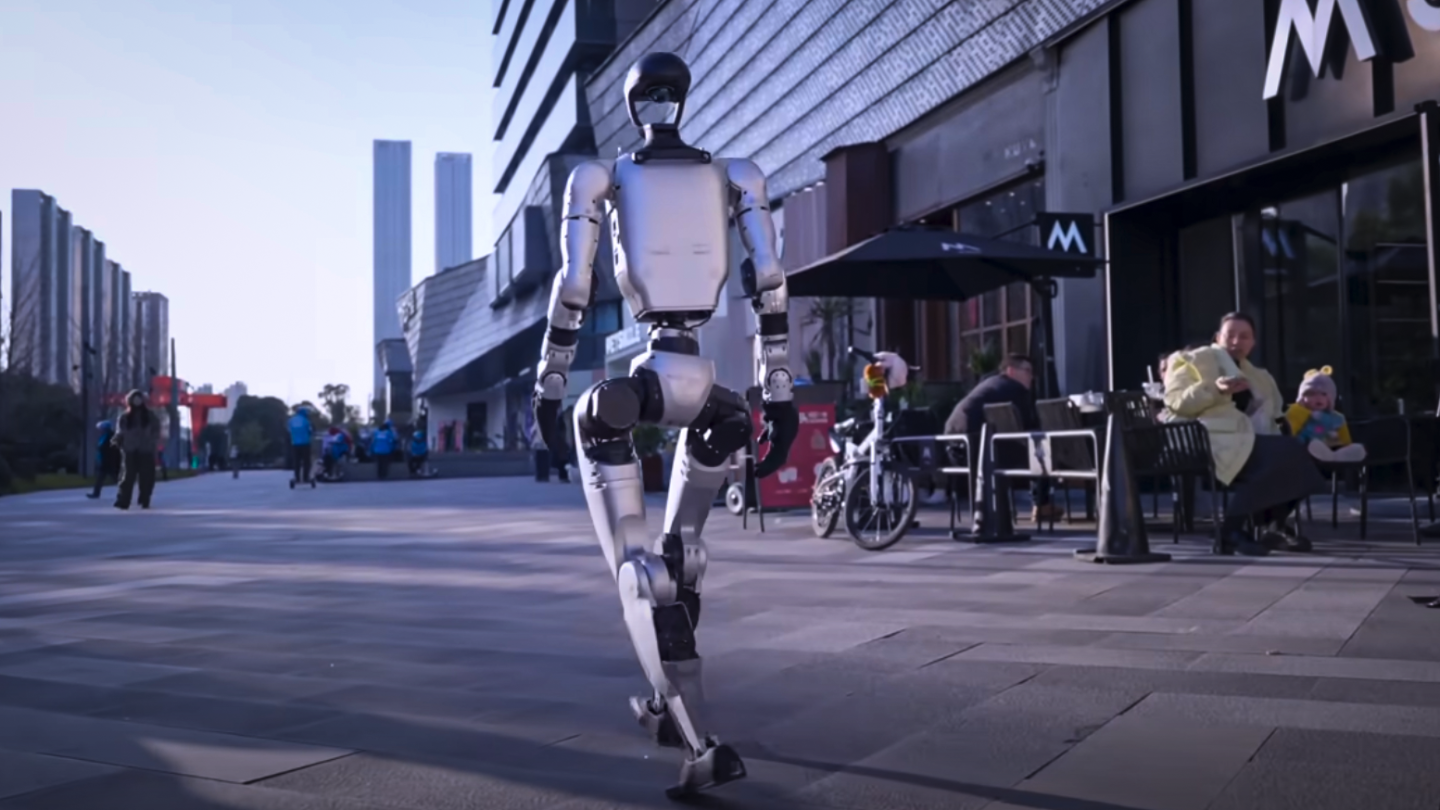Two new videos from Chinese companies demonstrate the rapid advancements in robotics, making it difficult to escape from robots. Robot dogs can now sprint at nearly Olympic speeds, and humanoids are navigating difficult terrain with ease.
Let’s start with Unitree’s G1 Bionic humanoid. This android, standing at 132 cm tall and weighing 35 kg, is equipped with LiDAR, depth cameras, and microphone arrays. With 23 degrees of joint freedom and powerful knee motors, the G1 can perform various agile movements like jumping, dancing, and contorting itself for storage.
Unitree
A recent video of the G1 Bionic showcases its claim to have “the smoothest walking and humanoid running in the world.” The video demonstrates its ability to run up and down steep inclines and navigate uneven surfaces effortlessly.
Unitree G1 Bionic: Agile Upgrade
While the G1 Bionic is impressive, the real speed advancements are in the quadruped world. The Black Panther V2.0 robot dog can now sprint at speeds of up to 10.4 meters per second, rivaling elite human athletes.
To achieve this speed, the researchers had to upgrade the robot’s legs with a shock-absorbing system and grippy rubber feet. The Black Panther can take up to five strides per second and achieve speeds of over 23 mph.
Robotic Dog Runs 100m in UNDER 10 SECONDS! (Black Panther 2.0)
While robotic advancements are not as rapid as AI in language and reasoning, the progress in robotics is undeniable. Intelligent robots are being developed for a variety of applications, mastering tasks like carrying, lifting, using tools, and navigating human environments.

Unitree
As robotic technology evolves, it brings to mind scenarios seen in Black Mirror episodes. With the aging population and declining birth rates, robotic labor may be essential for sustaining economic growth in the future.




